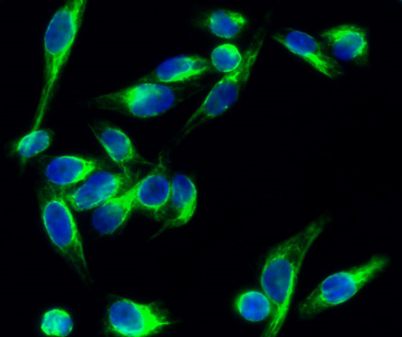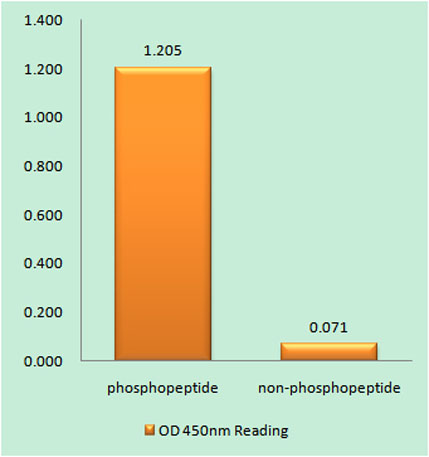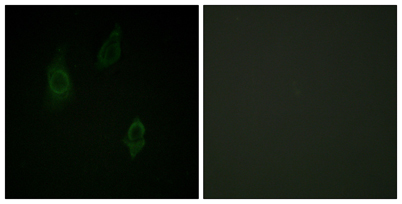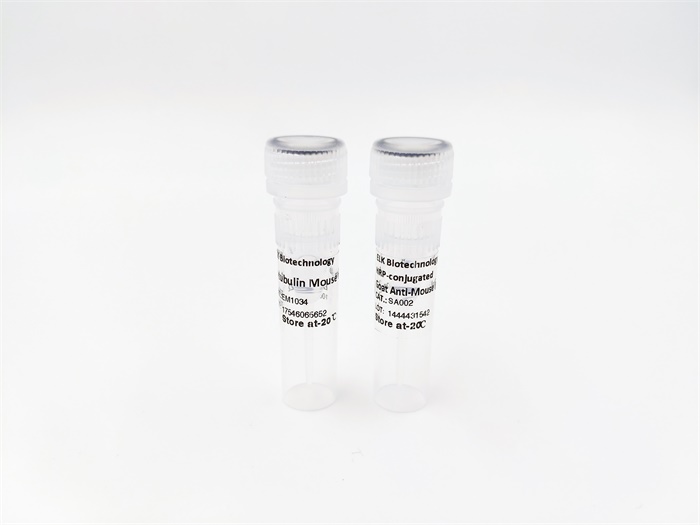| Product name: |
PKC (phospho Thr497) rabbit pAb |
| Reactivity: |
Human;Mouse;Rat |
| Alternative Names: |
PRKCA; PKCA; PRKACA; Protein kinase C alpha type; PKC-A; PKC-alpha; PRKCB; PKCB; PRKCB1; Protein kinase C beta type; PKC-B; PKC-beta; PRKCD; Protein kinase C delta type; Tyrosine-protein kinase PRKCD; nPKC-delta; PRKCE; PKCE; Protein kinase |
| Source: |
Rabbit |
| Dilutions: |
Western Blot: 1/500 - 1/2000. Immunohistochemistry: 1/100 - 1/300. Immunofluorescence: 1/200 - 1/1000. ELISA: 1/40000. Not yet tested in other applications. |
| Immunogen: |
The antiserum was produced against synthesized peptide derived from human PKC-pan around the phosphorylation site of Thr497. AA range:623-672 |
| Storage: |
-20°C/1 year |
| Clonality: |
Polyclonal |
| Isotype: |
IgG |
| Concentration: |
1 mg/ml |
| Observed Band: |
83kD |
| GeneID: |
5578/5579/5580/5581/5582/5583/5588/5590 |
| Human Swiss-Prot No: |
P17252/P05771/Q05655/Q02156/P05129/P24723/Q04759/Q05513 |
| Cellular localization: |
Cytoplasm . Cell membrane ; Peripheral membrane protein . Mitochondrion membrane ; Peripheral membrane protein . Nucleus . |
| Background: |
Protein kinase C (PKC) is a family of serine- and threonine-specific protein kinases that can be activated by calcium and the second messenger diacylglycerol. PKC family members phosphorylate a wide variety of protein targets and are known to be involved in diverse cellular signaling pathways. PKC family members also serve as major receptors for phorbol esters, a class of tumor promoters. Each member of the PKC family has a specific expression profile and is believed to play a distinct role in cells. The protein encoded by this gene is one of the PKC family members. This kinase has been reported to play roles in many different cellular processes, such as cell adhesion, cell transformation, cell cycle checkpoint, and cell volume control. Knockout studies in mice suggest that this kinase may be a fundamental regulator of cardiac contractility and Ca(2+) handling in myocytes. [provided by RefSeq, Jul 2 |










 Immunofluorescence analysis of Hela cell. 1,PKC (phospho Thr497) Polyclonal Antibody(green) was diluted at 1:200(4° overnight). 2, Goat Anti Rabbit Alexa Fluor 488 Catalog:RS3211 was diluted at 1:1000(room temperature, 50min). 3 DAPI(blue) 10min.
Immunofluorescence analysis of Hela cell. 1,PKC (phospho Thr497) Polyclonal Antibody(green) was diluted at 1:200(4° overnight). 2, Goat Anti Rabbit Alexa Fluor 488 Catalog:RS3211 was diluted at 1:1000(room temperature, 50min). 3 DAPI(blue) 10min. Western Blot analysis of 293 cells using Phospho-PKC (T497) Polyclonal Antibody diluted at 1:500
Western Blot analysis of 293 cells using Phospho-PKC (T497) Polyclonal Antibody diluted at 1:500 Enzyme-Linked Immunosorbent Assay (Phospho-ELISA) for Immunogen Phosphopeptide (Phospho-left) and Non-Phosphopeptide (Phospho-right), using PKC-pan (Phospho-Thr497) Antibody
Enzyme-Linked Immunosorbent Assay (Phospho-ELISA) for Immunogen Phosphopeptide (Phospho-left) and Non-Phosphopeptide (Phospho-right), using PKC-pan (Phospho-Thr497) Antibody Immunofluorescence analysis of HepG2 cells, using PKC-pan (Phospho-Thr497) Antibody. The picture on the right is blocked with the phospho peptide.
Immunofluorescence analysis of HepG2 cells, using PKC-pan (Phospho-Thr497) Antibody. The picture on the right is blocked with the phospho peptide.
 Manual
Manual